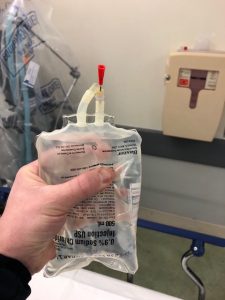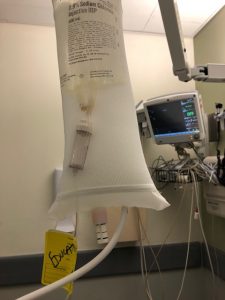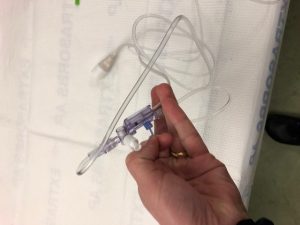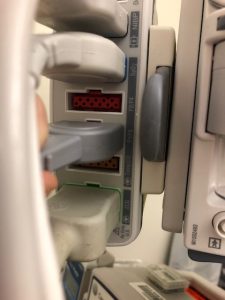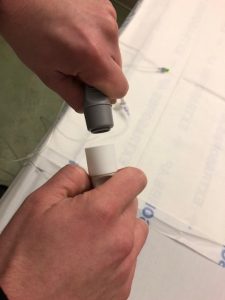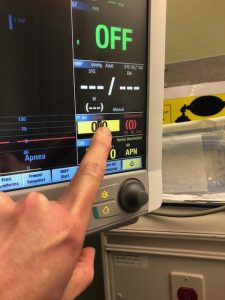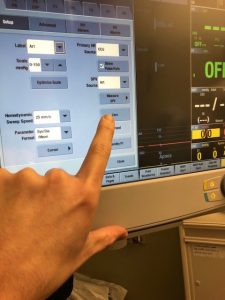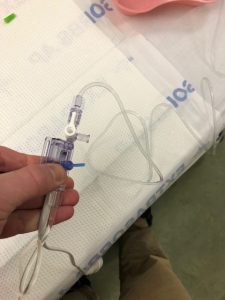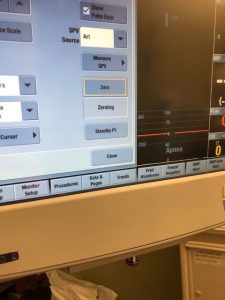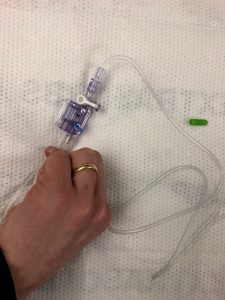There are better tutorials on how to set up a pressure transduction line. This tutorial specifically addresses the equipment available in the resuscitation bays at Mount Sinai.
You need:
(1) Bag of normal saline (any volume will do, preferably 500-1000 mL bag)
(2) Pressure bag
(3) Pressure transduction line
(4) Cable to go from transducer to monitor
(1) Get all of the air out of the bag of saline. The easiest way to do this is to insert a blunt tipped needle (into the port you would inject medication), invert the bag, and push out the air
(2) Spike the air-free bag with the transduction tubing set, and place the air-free bag of saline into a pressure bag and inflate (to the green marker on the indicator)
(3) Flush the transduction tubing set – make sure there are no bubbles (bubbles will ruin your transducer’s accuracy). You’ll need to pull the tab at the transducer to flush the distal part of the tubing. Every set of transduction tubing is different. At Sinai we have blue pull tabs. At Elmhurst there is a squeeze mechanism.
(4) You can now attach the flushed arterial line to the arterial catheter in the patient.. Make sure the connection between the transduction tubing and the arterial catheter is extremely tight. An open arterial catheter is a bad scene.
(5) Tape the transducer to a point at the level of the phlebostatic axis. You can tape the transducer to the patient more or less at the level of their heart, or tape it to a rail at the head of the bed at the same level
(6) There is a cable that runs from the monitor to the transducer.
Here’s where the wheels seem to come off. “Zeroing” an arterial line means setting the atmospheric pressure to zero (as long as the transducer and distal end of the tubing are at the same level).
(7) Click on the 0/0 (or whatever) reading on the monitor screen
in order to obtain this screen:
(8) Turn the stopcock at the transducer so that the transducer is seeing the environment (the port immediately off the stopcock) instead of the patient
(9) Click “zero” on the monitor. The monitor will then read “zeroing’. Do nothing until the monitor reads “zeroed”
(10) Open the stopcock so that the transducer is seeing the continuous column of fluid between it and the patient
(11) You are done. Cap that port at the transducer stopcock so that it stays clean.
